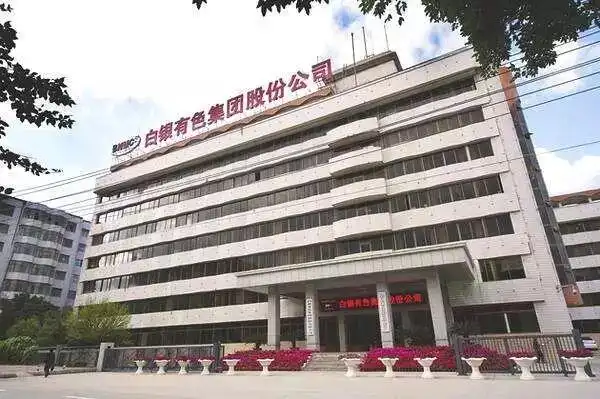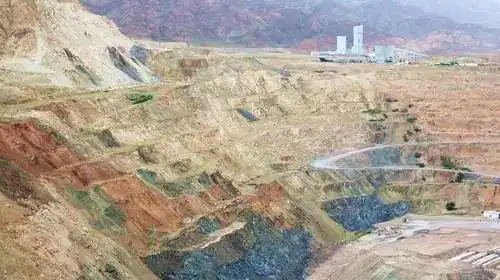Changes to Management System of China’s Nonferrous Metal Industry (1949-1999)
China’s non-ferrous metal industry has undergone a transition from a traditional planned economy to a modern market economy. During this process, the first thing that occurred was the reform of the management system, changing the highly concentrated resource allocation from plan-led to market-led. Practices before and after reform were compared to understand the effects of the two different management systems on economic development.
Pre-reform: 28 years after the founding of the People’s Republic of China (PRC)
When the People’s Republic of China (PRC) was founded, the foundation of China’s non-ferrous metal industry was very weak. In 1949, the output was only 13,000 tons, with seven or eight varieties, most of them being primary products.
After the founding of the PRC, the country attached greater importance to the development of the non-ferrous metal industry. In the early 1950s, the Ministry of Heavy Industry set up a non-ferrous metal administration to manage it. In 1958, the Nonferrous Metals Bureau and the Iron and Steel Bureau merged to form the Ministry of Metallurgical Industry. At that time, the Ministry of Nonferrous Metals Industry was also in the process of development.
After three years of recovery and the First Five Year Plan, the non-ferrous metals in the 156 projects aided by the former Soviet Union included the Harbin aluminum processing plant, the Henan Luoyang copper processing plant, the Jilin carbon plant, the Hunan Zhuzhou cemented carbide plant, the Liaoning Fushun aluminum plant, the Gansu Baiyin Nonferrous Metals Company, the Yunnan Tin Industry Company, the Yunnan Huize lead-zinc mine, the Yunnan Dongchuan Mining Bureau, the Liaoning Yangjiazhangzi Mining Bureau, the Xihuashan Tungsten mine in Jiangxi, the Dajishan tungsten mine, the Rongmeishan tungsten mine, and more than a dozen key projects.

The non-ferrous metal industry has laid a material and technical foundation for future industrial development in China. In the 28 years before the reform, the non-ferrous metal industry had undergone change through three major historical and cultural stages: three years of Great Leap Forward, three years of major adjustments, and ten years of the “Cultural Revolution.” Since that time, China has developed a relatively complete industrial system, ranging from mining, smelting, processing, and geology, scientific research, design, equipment manufacturing, and construction across the county, among many others.
Although the non-ferrous metal industry has made great progress, it has only had recent success in the national economy. Year after year, production has been in short supply and has failed to consistently meet economic development requirements.
From the Third Plenary Session of the Eleventh Central Committee to the end of the 20th century
The Third Plenary Session of the Eleventh Central Committee of the Communist Party of China was a historical turning point that launched a new voyage for Chinese reform.
At the time, in the Ministry of Metallurgy, a consensus was reached between the leader in charge of the non-ferrous metal industry and the employees engaged in its management: to accelerate industry development, management must be reformed. The leaders took the personal initiative, organized their efforts, and carried out investigations and studies in provinces rich in non-ferrous metals, including Liaoning, Hunan, Yunnan, Guizhou, Gansu, Jiangxi, Guangdong among others. They listened closely to the opinions of the provincial (regional) leaders and presented an investigative report to the leadership of the State Economic Commission.
After more than a year of work, in early 1981, the State Economic Commission proposed that the non-ferrous metal industry be made part of the metallurgical sector, and the State Administration of Non-ferrous Metals Industry was established. The plan was reported to the State Council, and the National Nonferrous Metals Administration approved the establishment in October of the same year.
In early 1982, the Central Finance and Economics Leading Group heard successive reports from the leaders of the National Nonferrous Metals Bureau and agreed that the National Nonferrous Metals Bureau would gradually transition to the “China Nonferrous Metals Industry Corporation,” becoming an economic entity. At this time, Northwest China engaged in the joint development of water, electricity, and aluminum. It was required that the development of non-ferrous metals does not go hand in hand, and economic benefits were to be carefully considered. To take advantage of non-ferrous metal resources, a visible difference was to be seen over a 10-year period.
In September 1982, the State Council decided to change the State Nonferrous Metals Bureau to China Nonferrous Metals Industry Corporation, and leaders of the State Economic Commission formed a nine-person planning team. At the end of the year, they submitted a planning report on outstanding superior varieties, accelerating the development speed, and creating a new situation in the production and construction of the non-ferrous metal industry.
In April 1983, the State Council agreed with the findings of the State Economic Commission’s “Report on the Establishment of China Nonferrous Metals Industry Corporation.” The State Council required that new breakthroughs being made in the organization of the company and that it truly became an economic entity that combined production, sales, and industry with trade. It also agreed on the principle to take part in the enterprise, so that there was unified management of the company’s personnel, property, production, supply and marketing, and centralized leadership.

From plan to market
History has shown that the transition from a traditional planned economic system to a market economy is a gradual process. Reform and opening up give a theoretical lead, but this does not replace accumulating practical experience. The evolution of the non-ferrous metal industry’s management system from plan-led to market-led has gradually widened development opportunities and space for the non-ferrous metal industry.
At the beginning of the establishment of the Nonferrous Corporation, special economic zones were piloted in Shenzhen, Zhuhai, Shantou, and Xiamen, which expanded the export authority of local and corporate foreign trade. The Nonferrous Corporation established branches in Hong Kong, Shenzhen, Zhuhai, and Xiamen, and opened the “window” for metal import and export trade. Since then, the import and export trade of nonferrous metals has quickly paralleled with international standards, and China has successively established overseas institutions in Japan, the United States, South Korea, Australia, and other countries. It has expanded its foreign trade to a number of key enterprises, and autonomy has promoted the reform of internal mechanisms.
The Nonferrous Corporation also established various forms of non-ferrous metal cooperation groups with the former Soviet Union, Japan, Canada, France, the United States, South Korea, Australia, and other countries. It has regularly carried out technological exchanges and economic and trade negotiations, which effectively promoted the company’s advanced technology, and has encouraged development projects in collaboration with foreign partners.
In 1992, according to the state ’s goal of further establishing the socialist market economic system reform, the Nonferrous Corporation requested that the company further transform its operating mechanism. Expectations were that they strived to establish a system that met the requirements of the market economy, had clear property rights, clear rights and responsibilities, separation of government and enterprise management, and scientific management. Since then, the state has comprehensively reformed the fiscal system, the financial system, and the foreign trade system, and further reformed the national investment system. The diversification of capital construction investment has fully mobilized enthusiasm in every aspect. The non-ferrous metal industry’s fixed-asset investment exceeded the tens of billions in 1999 and has grown significantly year after year.
In the 1999 constitutional amendment, the state made it clear that a non-public ownership economy is an important part of the socialist market economy, which greatly aroused the enthusiasm of private enterprises to set up non-ferrous metal factories and mines. Subsequently, strategies for the large-scale development of the western region and the strategic deployment for revitalizing old industrial bases in the northeast were put forward. The scale of investment further increased.
While strengthening macro-control, the state emphasized that the mode of economic growth should shift from extensive to intensive. This marked the development of China’s national economy in the direction of continuously deep reform and improvement of quality. As a result of these reforms, the non-ferrous metal industry has not only promoted the development of production and construction but has also greatly improved the level of science and technology in this field. From the introduction, digestion, and absorption to independent development, the effect is remarkable. China has entered the world’s leading ranks in equipment and technology used in the smelting of copper, nickel, and tin, and the electrolytic and processing equipment of aluminum.
At present, China is a large non-ferrous metal-producing and consuming country, but it is not yet an industrial power. There is still much work to be done and a long way to go. The contradictions exposed in today’s development processes include capital construction projects, macro-control, and a need for strengthening in overall coordination. In the non-ferrous metal industry chain, smelting capacities have grown too fast, resources are lacking, and mine construction cannot keep up with imported raw materials. Reliance is very high, and the rising prices of imported raw materials have squeezed the profit margins of enterprises. Non-ferrous companies are scattered, with many points, a wide range of industries, low industrial concentration, and weak international competitiveness. Management and production technology levels, varieties, and quality of enterprises are also lacking.
There are many gaps in the foreign-advanced levels. The structure for exporting products needs further adjustment; the export of primary and low-end products still account for a considerable proportion. Some shortage and deep-processed products also need to be imported, and the import and export volume of non-ferrous metals in foreign trade continues. There has been a deficit for more than a decade. To respond, some manufacturing companies have increased operating costs and reduced profit margins. The task of environmental protection remains arduous, particularly with regard to energy conservation, reduction of consumption, and elimination of outdated processes.
The road to developing a circular economy is long. We must conscientiously implement the spirit of the 17th National Congress of the Communist Party of China, thoroughly implement the scientific concept of development, continuously deepen reforms, strengthen macro-control, accelerate industrial restructuring, and further change the mode of growth. Additionally, we must persist in emancipating the mind, seek truth and pragmatism, and work hard to reach the end of this road.

